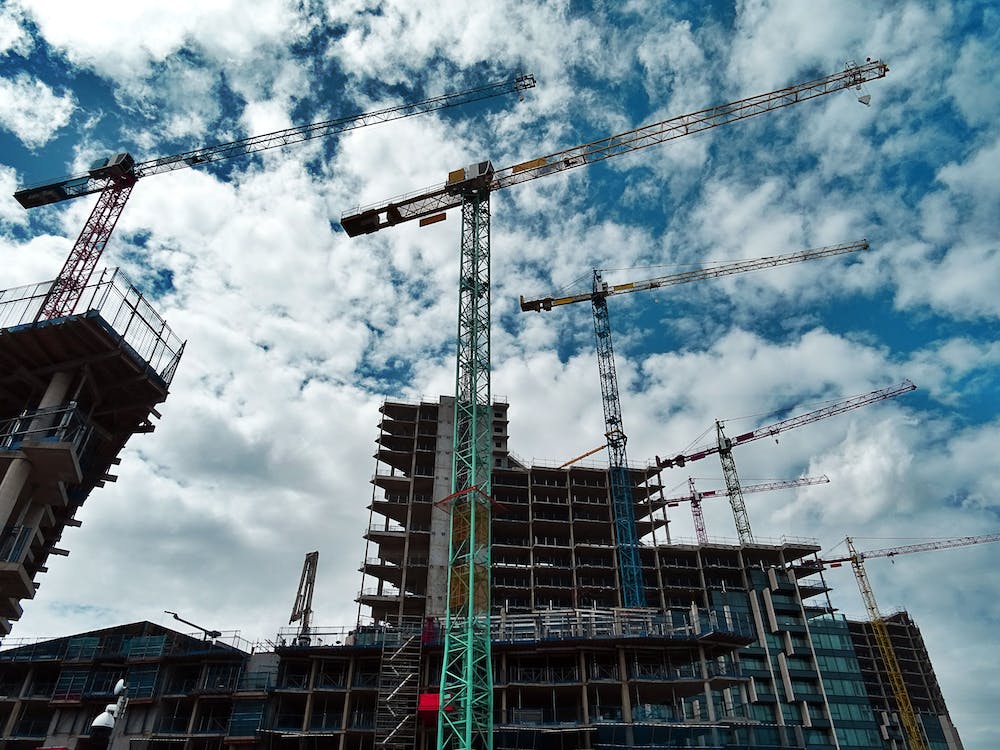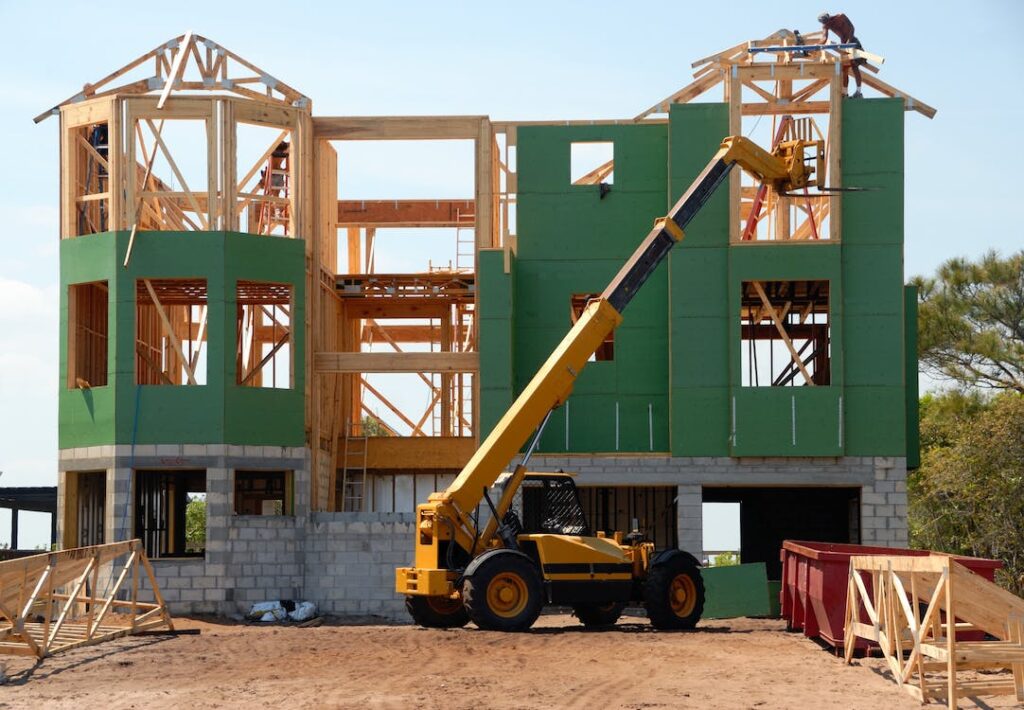In an era marked by growing environmental concerns and the pressing need to combat climate change, sustainable practices have become an imperative across all sectors of industry. The construction industry, notorious for its resource-intensive and environmentally damaging processes, is no exception. In response to this challenge, Zero Energy Buildings (ZEBs) have emerged as a beacon of hope, offering a promising path towards a more sustainable future for construction. In this blog post, we will explore the concept of Zero Energy Buildings, their importance, key features, and the factors driving their adoption. Join us on this journey as we delve into the transformative potential of Zero Energy Buildings and their role in shaping a greener, more sustainable future for construction.

Understanding Zero Energy Buildings
Zero Energy Buildings, often abbreviated as ZEBs, are architectural marvels designed to achieve a remarkable feat: balancing the energy they consume with the energy they produce. Put simply, a ZEB generates as much, or more, energy than it consumes over the course of a year. This is achieved by integrating a variety of energy-efficient technologies, renewable energy sources, and innovative design strategies.
The primary goal of ZEBs is to reduce the carbon footprint associated with buildings and minimise their dependence on fossil fuels. While the concept may seem futuristic, ZEBs are very much a reality today, with numerous exemplary projects having already been completed worldwide. These buildings represent a paradigm shift in the construction industry, emphasising sustainability, efficiency, and environmental responsibility.
Key Features of Zero Energy Buildings
Energy Efficiency
Energy efficiency is at the core of ZEB design. These buildings are equipped with state-of-the-art insulation, high-performance windows, and energy-efficient appliances. Moreover, advanced HVAC (Heating, Ventilation, and Air Conditioning) systems, lighting controls, and other technologies are used to optimise energy use. By reducing energy consumption, ZEBs set the stage for achieving net-zero energy.
Renewable Energy Sources
One of the defining characteristics of a ZEB is its reliance on renewable energy sources. Solar panels, wind turbines, and geothermal systems are common features of ZEBs, allowing them to generate clean, renewable energy on-site. These systems often produce surplus energy that can be fed back into the grid or stored for future use.
Passive Design Principles
Passive design principles play a crucial role in ZEBs. These principles take advantage of natural elements like sunlight, wind, and shade to regulate temperature and lighting within the building. Features such as strategic window placement, natural ventilation, and thermal mass help minimise the need for artificial heating and cooling.
Smart Building Technologies
ZEBs are often equipped with cutting-edge technologies, including smart sensors and automation systems. These technologies monitor and optimise various building functions, such as lighting, temperature, and ventilation, in real-time. By adjusting settings based on occupancy and environmental conditions, ZEBs further reduce energy consumption.
Sustainable Materials
The materials used in ZEB construction are carefully selected to minimise environmental impact. This includes the use of recycled and locally sourced materials, as well as materials with a low carbon footprint. Additionally, sustainable building practices, such as minimising construction waste and maximising recycling, are employed.
The Importance of Zero Energy Buildings
Zero Energy Buildings hold immense significance in the broader context of sustainability and climate change mitigation. Here are some key reasons why ZEBs are pivotal:
Reducing Carbon Emissions
Buildings play a big role in the problem of greenhouse gas emissions, mainly because they use a lot of energy. This energy comes from various sources and is needed for things like heating, cooling, lighting, and running our appliances. Unfortunately, this traditional way of constructing buildings has a pretty significant impact on the environment, and it’s a major contributor to the challenge of climate change.
But here’s the good news: there’s a way to change that, and it’s called ZEBs. These buildings are like environmental superheroes because they aim to use as much energy as they produce. This is a big deal in the fight against climate change because it means they don’t add to the problem. Instead, they’re part of the solution, and they’re showing us a more sustainable path forward for construction and our planet.
Energy Independence
ZEBs generate their own energy, often from renewable sources, making them less reliant on fossil fuels and vulnerable to energy price fluctuations. This energy independence offers economic benefits and enhances resilience.
Promoting Innovation
The development and construction of ZEBs drive innovation in the construction industry. Architects, engineers, and builders are constantly pushing the boundaries of what is possible, fostering creativity and advancing sustainable practices.
Showcasing Feasibility
ZEBs serve as living examples of the feasibility of sustainable construction. They demonstrate that it is possible to meet the energy needs of a building while reducing environmental impact.

Factors Driving the Adoption of Zero Energy Buildings
The adoption of Zero Energy Buildings is on the rise, and several key factors are propelling this trend:
Government Incentives
Governments at various levels are implementing policies and incentives to encourage the construction of ZEBs. These may include tax credits, grants, and favourable zoning regulations. Such incentives reduce the financial barriers associated with ZEB construction.
Cost-Effectiveness
Advancements in technology and economies of scale have made renewable energy systems more cost-effective. As the initial investment in renewable energy decreases, the long-term financial benefits of ZEBs become more attractive to builders and investors.
Growing Environmental Awareness
Increased awareness of climate change and environmental sustainability is driving demand for eco-friendly buildings. Consumers, businesses, and organisations are increasingly interested in reducing their carbon footprint, and ZEBs offer an effective way to do so.
Building Codes and Standards
Building codes and standards are evolving to incorporate energy efficiency and sustainability requirements. This pushes the construction industry toward adopting ZEB practices to meet regulatory compliance.
Technological Advancements
Advancements in building technologies, materials, and renewable energy systems have made ZEB construction more accessible and practical. These innovations have improved the performance and affordability of ZEBs.
Challenges and Barriers to Adoption
While the adoption of Zero Energy Buildings is gaining momentum, several challenges and barriers still need to be addressed:
High Initial Costs
The upfront cost of designing and constructing ZEBs can be significantly higher than traditional buildings. Although long-term energy savings offset these costs, many builders may be deterred by the initial investment.
Limited Expertise
Designing and constructing ZEBs require specialised knowledge and expertise. A shortage of professionals with experience in ZEB design and technology can be a barrier to widespread adoption.
Energy Storage Challenges
Intermittent energy sources like solar and wind can pose challenges for ZEBs. Energy storage solutions, such as advanced batteries, are needed to ensure a reliable energy supply during periods of low renewable energy generation.
Regulatory Hurdles
In some regions, outdated building codes and regulations may hinder the adoption of ZEB practices. Streamlining and updating these codes is essential to facilitate ZEB construction.
Perception and Awareness
There is still a lack of awareness and understanding of ZEBs among the general public and even within the construction industry. Education and outreach efforts are needed to dispel misconceptions and promote the benefits of ZEBs.
Zero Energy Buildings in Practice
To illustrate the real-world potential of Zero Energy Buildings, let’s take a look at a few remarkable examples. The first is The Bullitt Center in Seattle, USA. The Bullitt Center is often referred to as the “greenest commercial building in the world.” It generates 100% of its energy from on-site renewable sources, primarily solar panels. The building incorporates advanced energy-efficient technologies and was designed to last more than a century.
Another great example is The Beddington Zero Energy Development (BedZED) in London, UK.
BedZED is a pioneering sustainable community featuring 82 homes and 1,405 square metres of workspace. It was one of the first large-scale ZEB projects globally and showcases the integration of renewable energy, energy-efficient design, and sustainable living practices.
To round off, another building exhibiting zero energy characteristics is The Edge, which is located in Amsterdam, Netherlands. The Edge, an office building in Amsterdam, is renowned for its innovative and sustainable design. It boasts a vast array of solar panels, an advanced energy management system, and a unique smartphone app that allows occupants to customise their workspace for optimal comfort and energy efficiency.
A Sustainable Construction Future
Zero Energy Buildings represent a profound shift in the construction industry, one that aligns with the urgent need for sustainability and environmental responsibility. While challenges and barriers exist, the adoption of ZEBs is steadily gaining momentum, driven by government incentives, cost-effectiveness, and growing environmental awareness.
To fully realise the potential of ZEBs, collaboration across various stakeholders is essential. Architects, engineers, builders, policymakers, and investors must work together to overcome barriers, share knowledge, and promote the widespread adoption of ZEB practices.
As we look ahead to a more sustainable future, Zero Energy Buildings serve as a beacon of hope. They demonstrate that it is possible to construct buildings that not only meet our energy needs but also minimise our impact on the planet. The path to construction’s sustainable future is illuminated by the principles of ZEBs, guiding us toward a greener, more environmentally conscious world. It’s a journey that holds promise for future generations and the health of our planet.
A good construction software makes use of good project management functionality, estimate and financial/accounting tool functionality, job management, scheduling and planning and support functionalities and more. WunderBuild is a construction management software that aims to provide all of these functionalities and more to bring out the best outcomes for a project. Enquire here today, to learn more about Wunderbuild and start your free trial.



